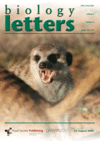 /
Research
/
Articles
/
2009
/
Integrating bioclimate with population models to improve forecasts...
/
Research
/
Articles
/
2009
/
Integrating bioclimate with population models to improve forecasts...

Brook, B.W., Akçakaya, H.R., Keith, D.A., Mace, G.M., Pearson, R.G., Araújo, M.B.
Climate change is already affecting species worldwide, yet existing methods of risk assessment have not considered interactions between demography and climate and their simultaneous effect on habitat distribution and population viability. To address this issue, an international workshop was held at the University of Adelaide in Australia, 25–29 May 2009, bringing leading species distribution and population modellers together with plant ecologists. Building on two previous workshops in the UK and Spain, the participants aimed to develop methodological standards and case studies for integrating bioclimatic and metapopulation models, to provide more realistic forecasts of population change, habitat fragmentation and extinction risk under climate change. The discussions and case studies focused on several challenges, including spatial and temporal scale contingencies, choice of predictive climate, land use, soil type and topographic variables, procedures for ensemble forecasting of both global climate and bioclimate models and developing demographic structures that are realistic and species-specific and yet allow generalizations of traits that make species vulnerable to climate change. The goal is to provide general guidelines for assessing the Red-List status of large numbers of species potentially at risk, owing to the interactions of climate change with other threats such as habitat destruction, overexploitation and invasive species.
Brook, B.W., Akçakaya, H.R., Keith, D.A., Mace, G.M., Pearson, R.G., Araújo, M.B. 2009. Integrating bioclimate with population models to improve forecasts of species extinctions under climate change. Biology Letters doi: 10.1098/rsbl.2009.0480